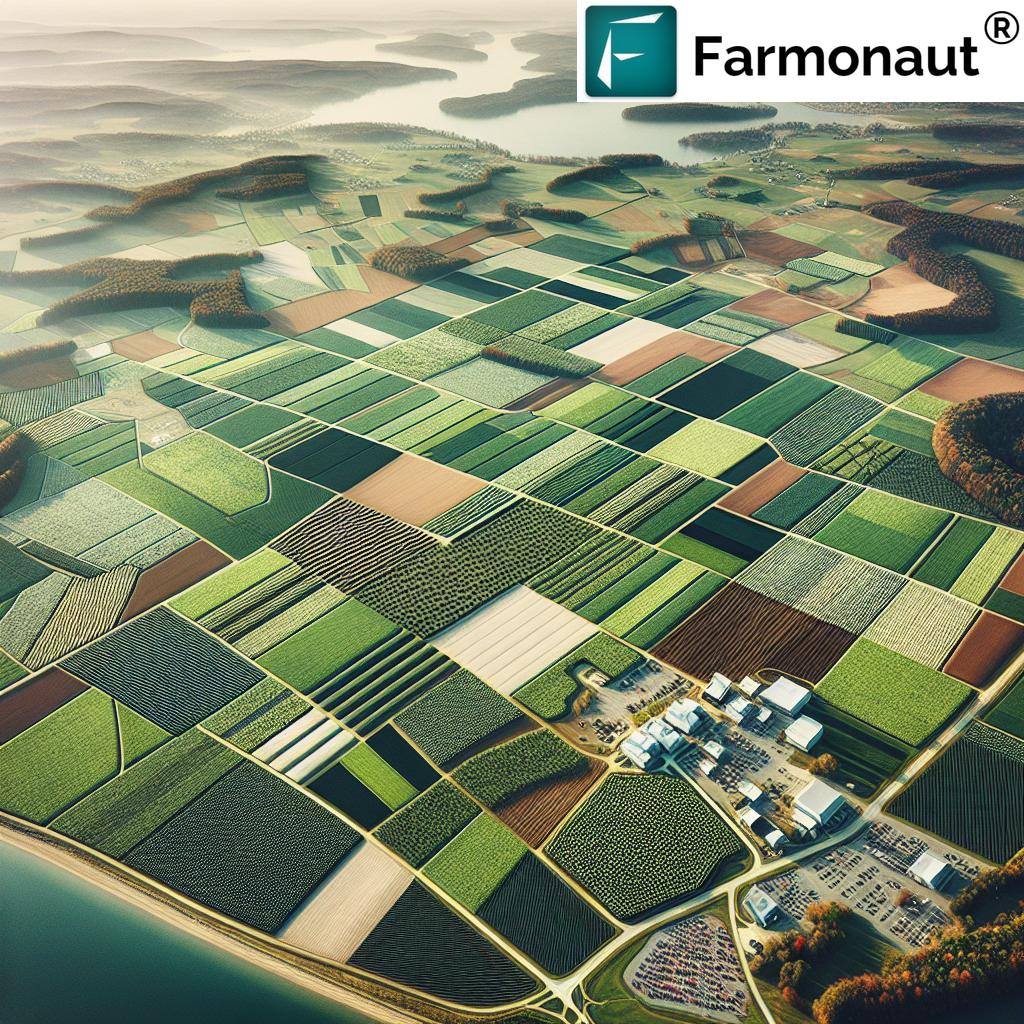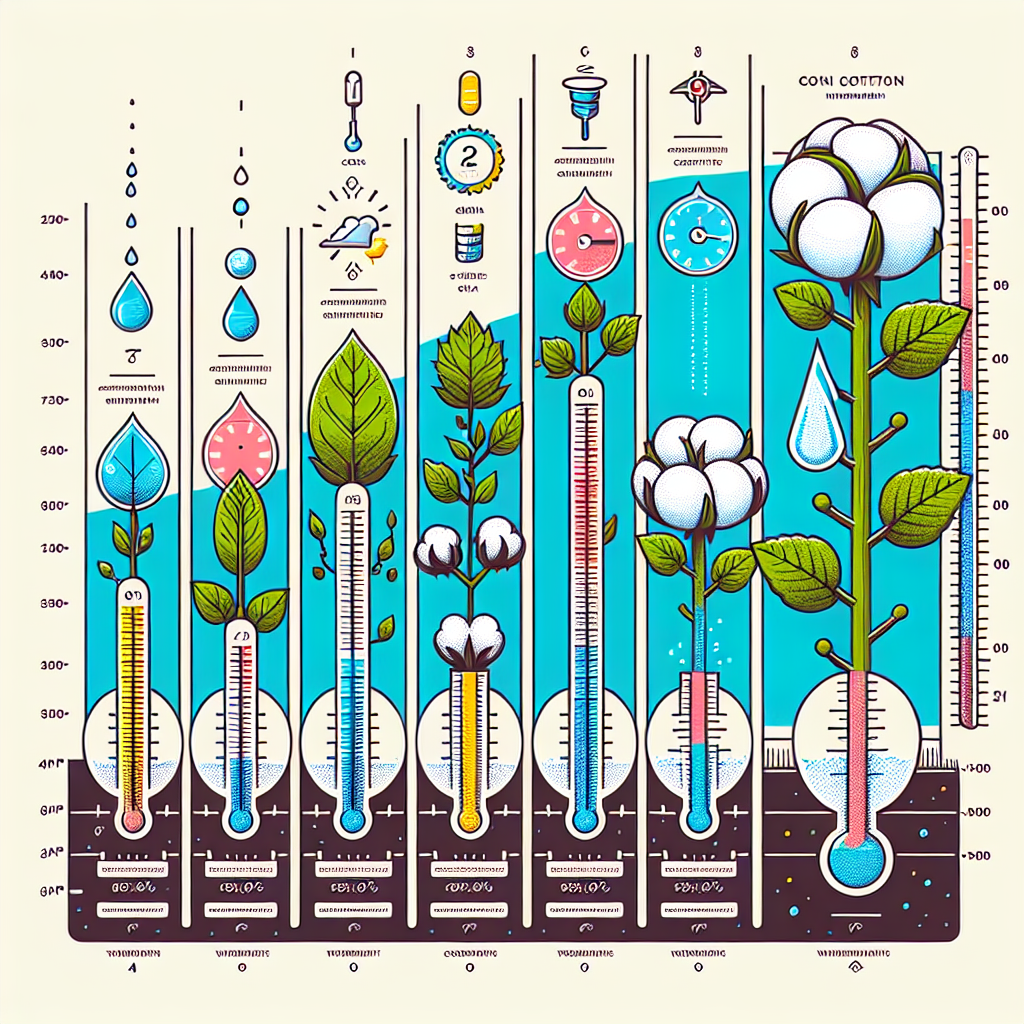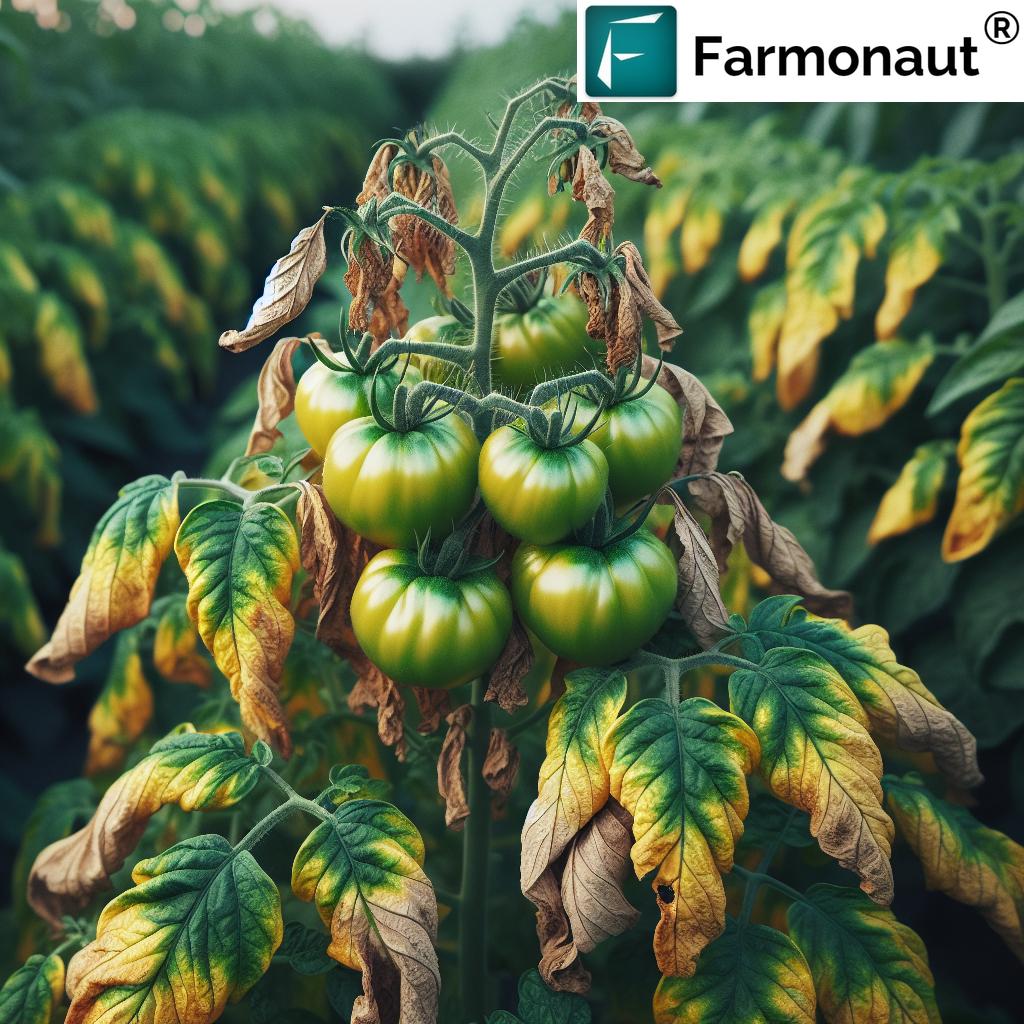Best App to Diagnose Plant Problems: Top 7 AI Apps 2025
- Introduction
- Plant Diagnostics Trivia
- Why Apps That Diagnose Plant Problems Matter in 2025
- How the Best Apps Diagnose Plant Problems with AI
- Comparative Features Table: Top 7 Plant Diagnosis Apps
- Top 7 Apps That Diagnose Plant Problems in 2025
- How Diagnosis Apps Are Revolutionizing Multiple Sectors
- Hottest Innovations: Precision, Integration, and Future of Plant Health Technology
- Farmonaut: Transforming Plant Health Monitoring & More
- Farmonaut Subscription Plans
- Frequently Asked Questions
- Conclusion
“In 2025, over 70% of top plant diagnostic apps will use AI-powered image recognition for disease detection.”
Introduction
The year 2025 marks a transformative era for agriculture, forestry, and environmental management. The convergence of artificial intelligence (AI), mobile technology, and satellite-based insights has given rise to a new generation of tools—apps that diagnose plant problems—poised to revolutionize how we monitor and maintain plant health. From seasoned agronomists to urban gardeners, an increasing number of professionals and enthusiasts now rely on intelligent apps that diagnose plant problems for accuracy, speed, and actionable results. These platforms combine high-resolution image recognition, deep learning, and cloud-hosted databases, enabling instant and precise identification of plant diseases, pest infestations, nutrient deficiencies, and more.
Let’s explore how the best app to diagnose plant problems is changing the global landscape, what innovations to expect in 2025, and which AI-powered tools are leading the way.
Why Apps That Diagnose Plant Problems Matter in 2025
The agricultural sector is witnessing transformative change in 2025, driven by advances in artificial intelligence and mobile technology. App that diagnose plant problems have emerged as indispensable tools for farmers, agronomists, forestry managers, and infrastructure project managers. The core appeal of these technologies lies in their ability to deliver immediate, actionable insights via easy-to-use platforms.
- Traditional methods often required expert knowledge or time-consuming laboratory testing. This could lead to delays in treatment, resulting in increased crop losses and extensive pesticide applications.
- The widespread availability of smartphones equipped with high-resolution cameras and strong processing power means users can now simply photograph a symptomatic leaf or stem. The app’s AI analyzes the image using databases of thousands of known plant issues and delivers results within seconds.
- Timely interventions enabled by these apps reduce crop losses, improve sustainability, and minimize the need for heavy-handed chemical treatments.
Precision farming and urban agriculture have experienced massive boosts in productivity and sustainability thanks to these advances. The same applies to forestry management, mining reclamation, and infrastructure green projects, where fast, accurate diagnosis is critical for ongoing plant health and ecological preservation.
How the Best Apps Diagnose Plant Problems with AI
The best app to diagnose plant problems in 2025 leverages an arsenal of cutting-edge technologies to ensure fast and accurate diagnosis:
- AI and Deep Learning: Advanced neural networks trained on millions of annotated images learn to identify plant diseases, deficiencies, and infestations with remarkable accuracy. This continuous learning as new data is uploaded leads to dynamic improvement in detection rates.
- Image Recognition: Combining smartphone camera input or satellite imagery, these apps match the symptomatic leaf or stem image to known examples in their database, rapidly determining the underlying problem.
- Extensive Databases: Cloud-hosted databases provide reference for thousands of crop species, pests, and diseases to serve users across global climates and ecosystems.
- Actionable Recommendations: Once a problem is diagnosed, the app recommends targeted treatments, whether that’s pest control, nutrient management, irrigation suggestions, or reminders for sustainable practices.
- Real-Time Monitoring: Many apps integrate with IoT devices and satellite data to monitor trends, offering warnings for upcoming outbreaks, stress, or abnormal vegetation indexes.
What Problems Can These Apps Help Diagnose?
The best app to diagnose plant problems can accurately identify a range of problems affecting both agriculture and forestry:
- Fungal, Bacterial, and Viral Diseases: Spotting early signs such as blights, rust, mildew, mosaic, and other infections.
- Pest Infestations: Including more than just physical pests (insects, mites); also flagging abnormalities caused by their activity.
- Nutrient Deficiencies: Detecting insufficient levels of nitrogen, phosphorous, potassium, or other micro/macro nutrients that cause leaf discoloration, stunted growth, or poor yields.
- Abiotic Stressors: Identifying symptoms due to drought, flooding, temperature extremes, or pollution in urban/industrial areas.
- Mechanical Injury: Recognizing physical damage from human activity, equipment, or infrastructure projects.
This broad diagnostic ability supports sustainable resource management and targeted intervention, sharply improving outcomes for plant stewards.
Comparative Features Table: Top 7 Plant Diagnosis Apps
To empower readers to make informed decisions about the best app to diagnose plant problems in 2025, here’s a detailed comparative table of the top 7 AI-powered plant diagnostic apps:
| App Name | AI Diagnostic Accuracy (%) | Platform Availability | Key Technologies Used | Avg. Speed of Diagnosis | Range of Plant Support (#Species) | Unique Features | User Rating (out of 5) |
|---|---|---|---|---|---|---|---|
| Farmonaut | 98 | Android, iOS, Web, API | Satellite Imaging, AI, Machine Learning, Blockchain | Instant (within seconds) | 30,000+ | Multispectral satellite monitoring, real-time AI advisory (Jeevn AI), environmental & carbon impact, blockchain traceability | 4.9 |
| Plantix | 94 | Android, iOS | Image Recognition, Deep Learning | 5-10 seconds | 10,000+ | Multilingual support, community Q&A, local disease/pest library | 4.6 |
| PictureThis | 92 | Android, iOS | AI Image Matching, Data Analytics | ~5 seconds | 17,000+ | Extensive global flora, automatic care reminders, gardening tips | 4.7 |
| AgroAI Scan | 90 | Android, Web | Computer Vision, GIS Integration | 10 seconds | 7,000+ | GIS-based location tagging, area-wide pest outbreak alerts | 4.5 |
| PlantDoctor | 87 | Web, iOS | AI-Supported Expert System | ~15 seconds | 5,000+ | Exportable diagnostic reports, snapshot historical tracking | 4.4 |
| CropSafe | 89 | Android, Web, API | Remote Sensing, Machine Learning | 5-20 seconds | 14,000+ | Predictive yield analytics, specific pesticide guidance | 4.5 |
| PlantSnap Pro | 85 | Android, iOS | AI, Global Flora DB | ~7 seconds | 25,000+ | Worldwide coverage, integration with gardening communities | 4.3 |
Top 7 Apps That Diagnose Plant Problems in 2025
Below is a closer look at the best apps to diagnose plant problems, their unique technologies, features, and why they stand out in 2025.
1. Farmonaut
Farmonaut is at the forefront of satellite-based diagnostics and real-time advisory for agriculture, forestry, mining reclamation, and infrastructure projects. As a leading app that diagnoses plant problems, Farmonaut integrates advanced satellite imaging, AI, blockchain traceability, and machine learning to deliver instant, actionable insights on vegetation health, soil quality, disease outbreaks, and more.
- Tech Stack: Combines multispectral satellite monitoring (NDVI, Soil Moisture, LAI, etc.), Jeevn AI for advisory, and blockchain for traceability.
- Speed & Accuracy: Delivers diagnostics in seconds, with a growing database covering over 30,000 plant types.
- Platforms & Accessibility: Available via Android, iOS, Web App, and robust API (API access).
- Unique Benefits: Real-time monitoring, carbon footprint tracking, blockchain product traceability, satellite-based crop loan/insurance, and fleet/resource management.
- Use Case: Agricultural, mining, and infrastructure stakeholders benefit from robust, data-driven management and environmental compliance tools.
Try Farmonaut on your platform of choice:



2. Plantix
Plantix remains a favorite among farmers and agronomists for its user-friendly interface, fast diagnosis, and strong community support. It employs deep learning-based image recognition to identify thousands of diseases, pests, and nutrient deficiencies across a broad spectrum of crops.
- Platforms: Android, iOS
- Speed & Coverage: 5-10 second analysis, real-world accuracy up to 94% in crop diagnostics.
- Features: Community Q&A, disease maps, localized weather alerts, and access to agricultural input dealers.
- Use Case: Ideal for smallholder farmers seeking instant problem identification and low-barrier entry into digital agriculture.
3. PictureThis
PictureThis brings a gardening focus but offers robust plant diagnostics suitable for home gardens, botanical experts, and even urban infrastructure maintenance. Extensive flora coverage, well-designed interface, and AI-powered problem identification make it one of the best apps in its class.
- Platforms: Android, iOS
- Key Features: Global plant species database, custom care reminders, and image-based disease and pest diagnosis.
- User Base: Especially popular with urban gardeners, city landscapers, and educational institutions.
4. AgroAI Scan
AgroAI Scan stands out for integrating GIS and computer vision. It enables precision identification not just on individual plants, but also offers geo-tagged location awareness and outbreak mapping—an asset for government agencies and commercial farms.
- Platforms: Android, Web
- Unique Edge: Regional pest/disease alerts, integration with remote sensing data.
- Best For: Coordinated action across large landscapes, monitoring forest pests, and regional crop management.
5. PlantDoctor
PlantDoctor offers AI-powered diagnosis via both an easy-access web interface and iOS app, focusing on expert-guided knowledge bases. Its snapshot comparison supports historical tracking and reporting—a huge benefit in structured operations or research.
- Platforms: Web, iOS
- Unique Features: Export capabilities for diagnostic reports, history tracking for recurring plant health problems.
- Ideal For: Research stations, forestry departments, and data-oriented agronomists.
6. CropSafe
CropSafe blends AI vision with satellite remote sensing, offering predictive diagnostics and management recommendations tailored for commercial crops. It supports web and app-based diagnostics, with an API for agtech integrations.
- Platforms: Android, Web, API
- Strengths: Focus on predictive analytics, field scouting, and pesticide use optimization.
- Suited For: Larger-scale commercial agriculture, exporters, and consultancy organizations.
7. PlantSnap Pro
PlantSnap Pro offers global plant coverage, robust AI recognition, and a gardening community platform. Its disease and pest identification, while less in-depth than others, is improving rapidly due to continuous AI training and mass user data uploads.
- Platforms: Android, iOS
- Main Features: Photograph-based identification, care guidance, and access to a vibrant gardening forum for crowdsourced solutions.
- Great For: Enthusiastic gardeners, green urban initiatives, and educational outreach.
“Mobile plant health apps are projected to analyze more than 1 billion plant images globally by the end of 2025.”
How Diagnosis Apps Are Revolutionizing Multiple Sectors
Apps that diagnose plant problems are not limited to farm fields. Their rapid, accurate, and scalable technology is revolutionizing an entire spectrum of industries:
1. Agriculture: Empowering Precision and Sustainability
In agriculture, the best app to diagnose plant problems is now integral to precision farming practices. By pinpointing the exact cause of plant distress—be it fungal, bacterial, viral, or nutrient imbalance—farmers can adopt targeted treatments, optimize resources, and boost yields while reducing environmental impact.
- Example: When crops exhibit yellowing leaves, a rapid app analysis may reveal a nitrogen deficiency rather than a pest, helping avoid unnecessary pesticide applications and saving input costs.
- Supporting Sustainability: Targeted interventions minimize the carbon footprint and agrochemical use, aligning with global sustainability goals.
2. Forestry: Safeguarding Forest Health Against Climate Threats
Forestry managers are leveraging apps that diagnose plant problems for large-scale, real-time monitoring of forest health. Integration with satellite-based platforms, like Farmonaut’s large-scale management suite, allows forest teams to:
- Detect early-stage infections, pest outbreaks, and nutrient stresses across immense reserves.
- Initiate timely interventions to prevent loss of biodiversity and preserve timber value.
- Monitor the success of conservation projects, replanting campaigns, or natural regeneration.
3. Mining Reclamation: Supporting Ecological Recovery
As the mining sector faces increased scrutiny over its environmental impact, app-based diagnostic tools are supporting land rehabilitation:
- Assess soil quality and track the progress of reforestation and revegetation projects.
- Quickly identify vegetation stress during reclamation, prompting corrective soil amendments or irrigation changes.
- Monitor carbon sequestration or environmental impact with satellite and ground-level applications.
For comprehensive tracking, the integration of carbon footprint monitoring modules helps mining operators document their progress toward sustainability benchmarks.
4. Green Infrastructure & Urban Spaces
Urban planners, landscape architects, and maintenance crews use diagnosis apps to preserve the health and beauty of city parks, roadside plantations, and urban forests.
- Early outbreak detection prevents widespread losses and keeps maintenance costs manageable.
- Maintaining healthy green spaces improves air quality, public well-being, and urban aesthetics.
Hottest Innovations: Precision, Integration, and the Future of Plant Health Technology
The best app to diagnose plant problems in 2025 is more than a recognition engine—it is a node in a comprehensive, integrated ecosystem for plant health:
- Machine Learning on Global Datasets: Apps continuously update diagnostic algorithms with millions of new plant images, adapting instantly to emerging threats fueled by climate change and evolving pest resistances.
- Multispectral Imaging: Advanced apps can now process multispectral inputs (via smartphone attachments or satellite feeds) for deeper, non-visible stress indicators—especially valuable for large-scale farming and forestry monitoring.
- Weather Integration: Built-in forecasting enables proactive interventions, warning users of upcoming disease outbreaks due to humidity, rainfall, or temperature shifts.
- User Feedback Loops: Crowdsourced corrections and confirmations ensure that diagnosis models are always improving. The global reach of smartphones and cloud-based infrastructure amplifies the learning cycle.
- Farm Management Integration: Many leading platforms now coordinate diagnostics with resource management, carbon monitoring, fleet tracking, and compliance modules.
Farmonaut: Transforming Plant Health Monitoring & More
At Farmonaut, our mission is to make satellite-driven insights affordable and accessible—not just for agriculture, but also mining, infrastructure, and environmental projects.
Satellite-Driven Diagnosis and Insights
We leverage state-of-the-art AI, machine learning, satellite imaging, and blockchain to diagnose plant health problems with industry-leading speed and accuracy. Our Jeevn AI advisory system delivers tailored, real-time strategies, adapting to unique crop or project requirements.
- NDVI and Multispectral Monitoring: Detect stress to vegetation that’s invisible to the naked eye.
- Blockchain Traceability: Ensure transparency and trust across agricultural, mining, and supply chains. Learn more about our product traceability solution.
- Resource and Fleet Management: Optimize your field machinery and logistics with satellite insights: Fleet Management Module.
- Environmental Impact Monitoring: Track carbon output and sustainability metrics. See our carbon footprinting page.
Farmonaut’s solutions are available via Android, iOS, Web App, and API.



Developers can seamlessly plug our insights and signals into their own solutions: Farmonaut API Developer Documentation.
For agro-enterprises or governments managing larger assets and teams, our Agro Admin App helps orchestrate satellite-based management at scale—ideal for plantation, forest, and nationwide agrifood operations.
Farmonaut Subscription Plans
The Farmonaut platform operates through affordable subscriptions tailored to individuals, businesses, and governments. Choose the right package for your diagnostic and monitoring needs:
Frequently Asked Questions (FAQ)
-
Q: What is the key advantage of using an app that diagnoses plant problems?
These apps provide immediate, actionable insights through AI-powered image recognition—enabling timely and targeted interventions that reduce crop losses, minimize unnecessary pesticide use, and promote sustainability.
-
Q: Are app-based plant diagnostics as reliable as lab tests or expert opinion?
With continuous AI training on millions of diagnosed cases, many top apps achieve accuracy rates approaching 98%. For most common issues, diagnostics are highly reliable; rare or complex cases may still require expert review.
-
Q: How do apps account for new diseases or changing climate patterns?
AI-driven apps update their algorithms regularly and leverage user-submitted images, ensuring adaptability to new threats. Weather integration and satellite monitoring support proactive identification of climate-driven outbreaks.
-
Q: Can plant diagnosis apps support sustainability goals?
Yes, by enabling targeted treatments, optimizing input use, and integrating carbon footprint monitoring, these apps directly contribute to sustainable agriculture, forestry, and mining reclamation.
-
Q: What’s the difference between Farmonaut and other plant diagnostic apps?
Farmonaut blends satellite-based monitoring, AI advisory, blockchain traceability, fleet/resource management, and environmental tracking into a single, scalable platform. Its versatility, cross-industry application, and cost effectiveness distinguish it in the global market.
-
Q: Is there a way for businesses or governments to integrate app diagnostics into existing management systems?
Absolutely—Farmonaut offers robust API access and developer documentation for seamless integration.
-
Q: Can smallholder farmers afford and use these modern diagnostic tools?
Yes, many of the top apps offer free basic features, while Farmonaut’s subscription model ensures accessibility for farmers, with advanced analytics and insights for businesses or large operations.
Conclusion: The Future of Plant Problem Diagnosis Is Here
In 2025, apps that diagnose plant problems are ushering in a new chapter—at the crossroads of technology and sustainability. Farmers, foresters, mining operators, and urban planners are empowered by instant, precise insights that drive smarter resource use, safer environments, and greater yields. These apps, with their AI, satellite imaging, and rapid innovation cycles, are rapidly becoming the core engine of sustainable management for both smallholders and large-scale enterprises.
The journey from physical scouting and guessing to AI-powered, data-driven plant health management is now a global reality. The best app to diagnose plant problems will not only enhance productivity but will play a vital role in preserving biodiversity, restoring degraded lands, and building a greener, healthier future for our planet.
Ready to transform how you manage plant diagnostics in agriculture, forestry, mining, or city planning? Explore Farmonaut now, or launch the web app for instant results.










